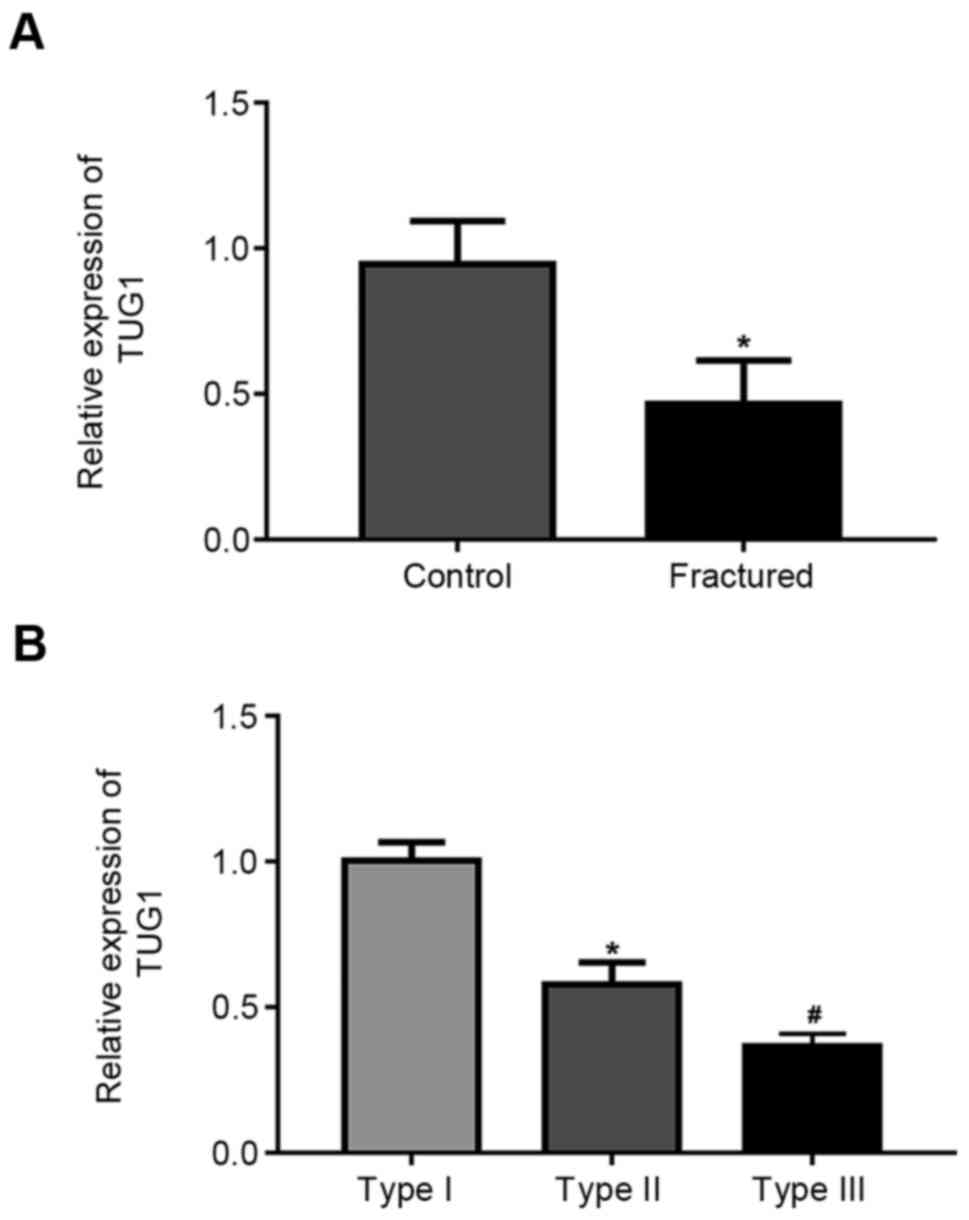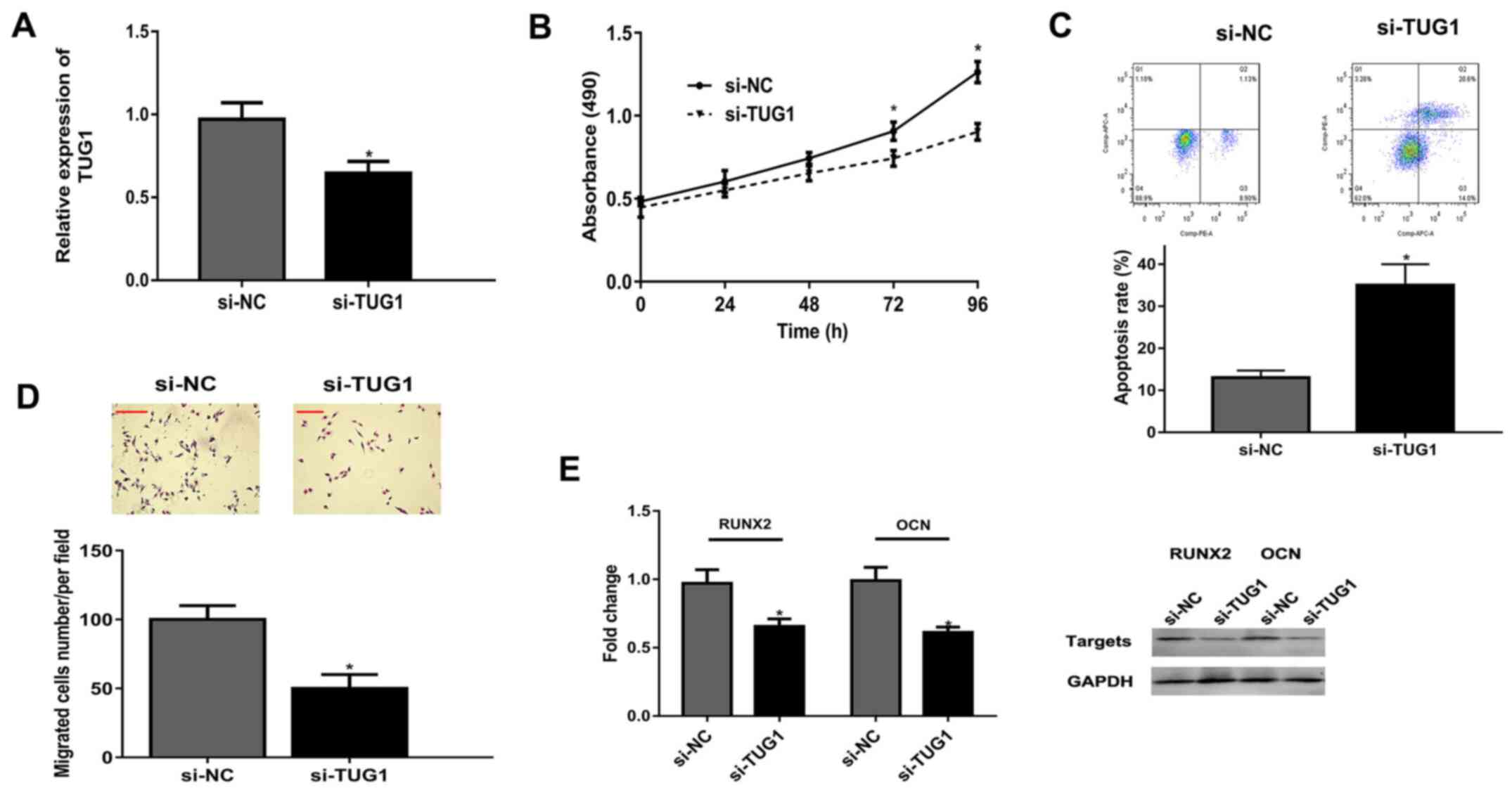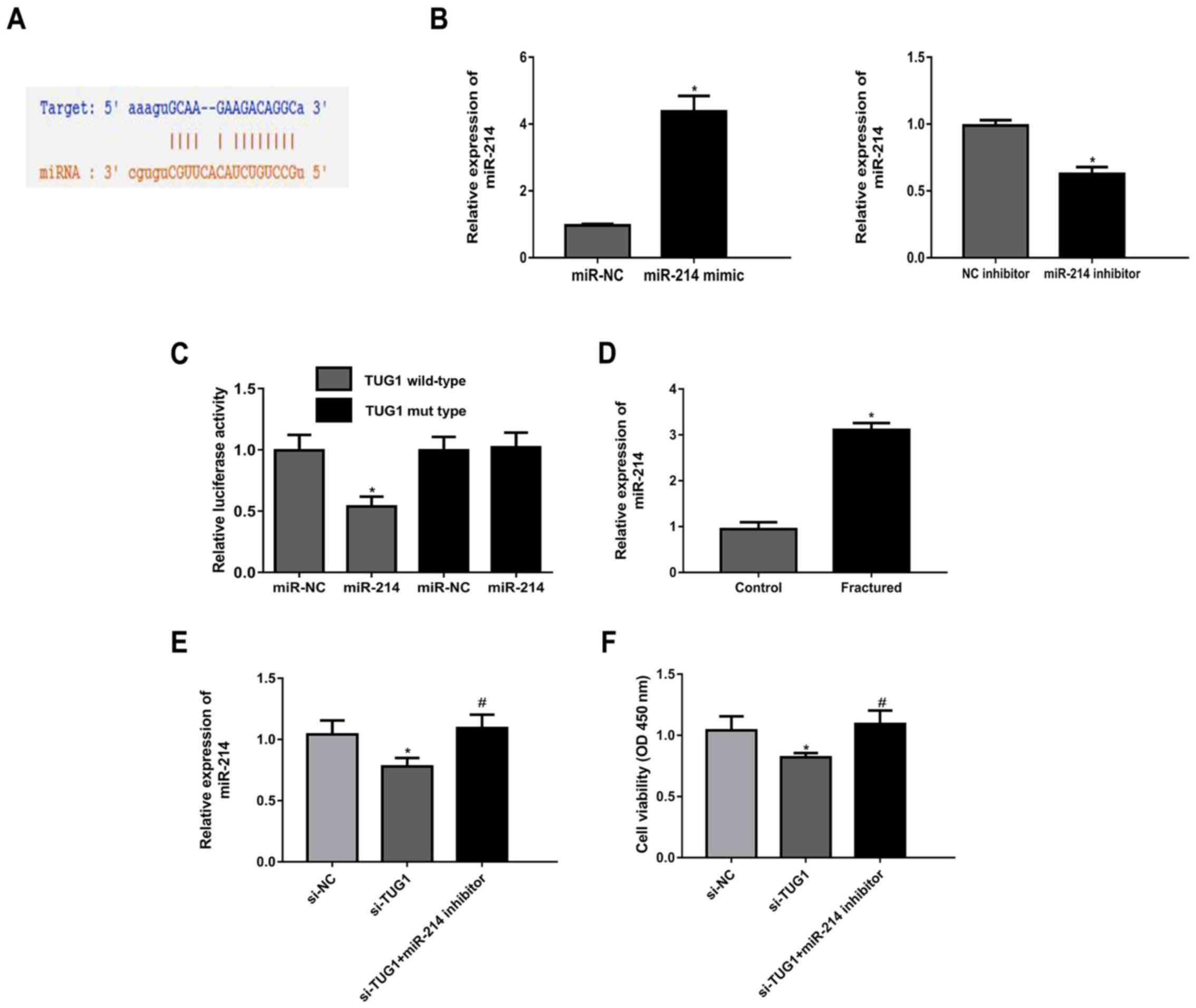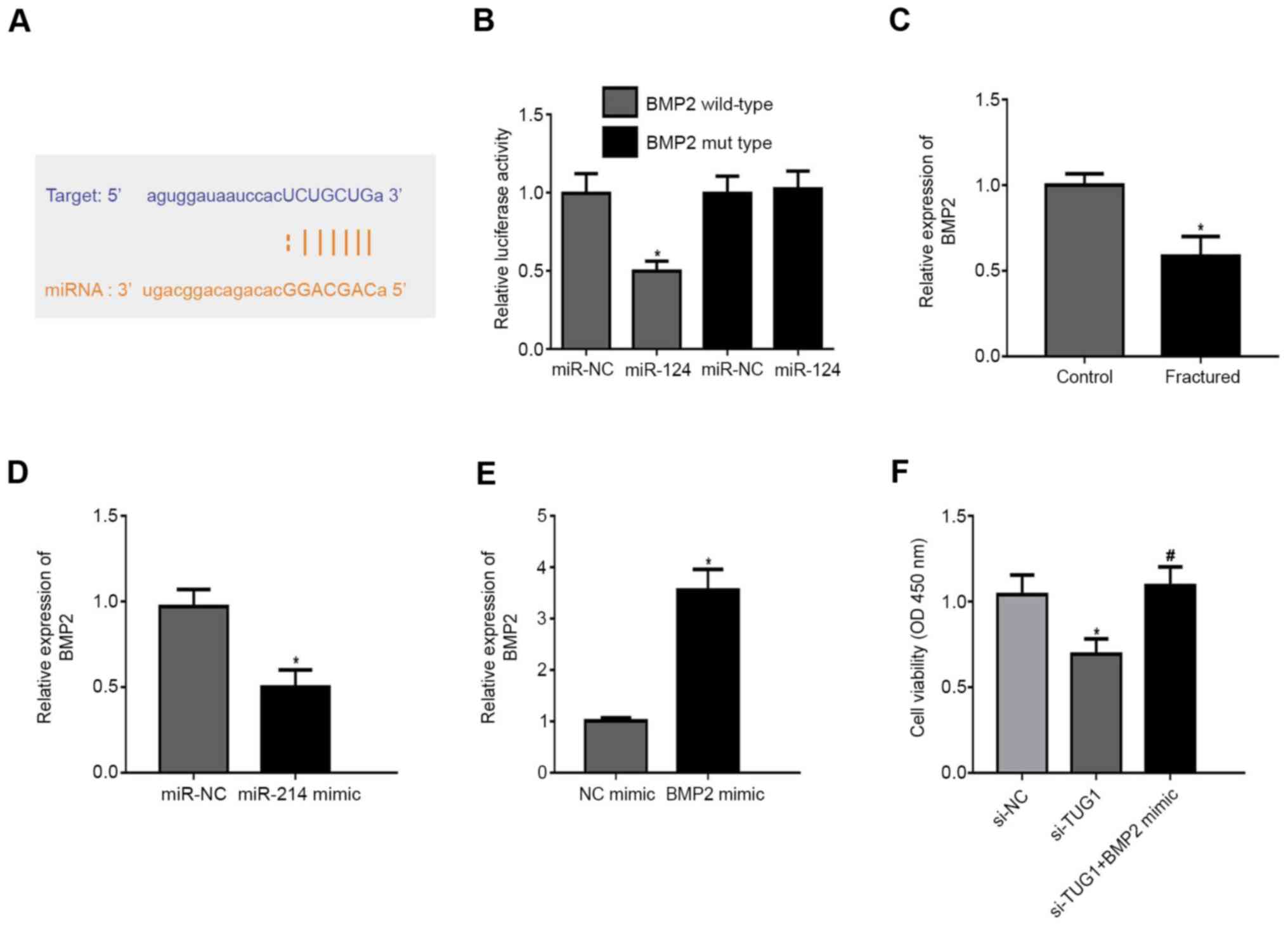|
1
|
Motamedi MH, Dadgar E, Ebrahimi A, Shirani
G, Haghighat A and Jamalpour MR: Pattern of maxillofacial
fractures: A 5-year analysis of 8,818 patients. J Trauma Acute Care
Surg. 77:630–634. 2014.PubMed/NCBI View Article : Google Scholar
|
|
2
|
Shenoi S, Budhraja N and Badjate S: An
assessment of maxillofacial fractures: A two-year retrospective
study. J Emerg Trauma Shock. 5(205)2012.PubMed/NCBI View Article : Google Scholar
|
|
3
|
Zhou HH, Ongodia D, Liu Q, Yang RT and Li
ZB: Dental trauma in patients with maxillofacial fractures. Dent
Traumatol. 29:285–290. 2013.PubMed/NCBI View Article : Google Scholar
|
|
4
|
Feng Z, Chen R, Zhang Y, Yang M, Lin Y,
Tian W and Liu L: Outcome of postsurgical sequential functional
exercise of jaw fracture. J Craniofac Surg. 20:46–48.
2009.PubMed/NCBI View Article : Google Scholar
|
|
5
|
Schindeler A, McDonald MM, Bokko P and
Little DG: Bone remodeling during fracture repair: The cellular
picture. Semin Cell Dev Biol. 19:459–466. 2008.PubMed/NCBI View Article : Google Scholar
|
|
6
|
Giannoudis PV, Einhorn TA and Marsh D:
Fracture healing: The diamond concept. Injury. 38 (Suppl 4):S3–S6.
2007.PubMed/NCBI View Article : Google Scholar
|
|
7
|
Claes L, Recknagel S and Ignatius A:
Fracture healing under healthy and inflammatory conditions. Nat Rev
Rheumatol. 8:133–143. 2012.PubMed/NCBI View Article : Google Scholar
|
|
8
|
Mattick JS and Rinn JL: Discovery and
annotation of long noncoding RNAs. Nat Struct Mol Biol. 22:5–7.
2015.PubMed/NCBI View Article : Google Scholar
|
|
9
|
Geisler S and Coller J: RNA in unexpected
places: Long non-coding RNA functions in diverse cellular contexts.
Nat Rev Mol Cell Biol. 14:699–712. 2013.PubMed/NCBI View
Article : Google Scholar
|
|
10
|
Li XG, Liu SC, Qiao XF, Kong Y, Liu JG,
Peng XM, Wang YX and Abdulkarim Mohammed Al-Mohana RA: LncRNA MEG3
promotes proliferation and differentiation of osteoblasts through
Wnt/β-catenin signaling pathway. Eur Rev Med Pharmacol Sci.
23:4521–4529. 2019.PubMed/NCBI View Article : Google Scholar
|
|
11
|
Yin C, Tian Y, Yu Y, Wang H, Wu Z, Huang
Z, Zhang Y, Li D, Yang C, Wang X, et al: A novel long noncoding RNA
AK016739 inhibits osteoblast differentiation and bone formation. J
Cell Physiol. 234:11524–11536. 2019.PubMed/NCBI View Article : Google Scholar
|
|
12
|
Mulati M, Kobayashi Y, Takahashi A, Numata
H, Saito M, Hiraoka Y, Ochi H, Sato S, Ezura Y, Yuasa M, et al: The
long noncoding RNA Crnde regulates osteoblast proliferation through
the Wnt/β-catenin signaling pathway in mice. Bone.
130(115076)2020.PubMed/NCBI View Article : Google Scholar
|
|
13
|
Young TL, Matsuda T and Cepko CL: The
noncoding RNA taurine upregulated gene 1 is required for
differentiation of the murine retina. Curr Biol. 15:501–512.
2005.PubMed/NCBI View Article : Google Scholar
|
|
14
|
Li Z, Shen J, Chan MT and Wu WK: TUG1: A
pivotal oncogenic long non-coding RNA of human cancers. Cell
Prolif. 49:471–475. 2016.PubMed/NCBI View Article : Google Scholar
|
|
15
|
Katsushima K, Natsume A, Ohka F, Shinjo K,
Hatanaka A, Ichimura N, Sato S, Takahashi S, Kimura H, Totoki Y, et
al: Targeting the Notch-regulated non-coding RNA TUG1 for glioma
treatment. Nat Commun. 7(13616)2016.PubMed/NCBI View Article : Google Scholar
|
|
16
|
Manson PN: Some thoughts on the
classification and treatment of Le Fort fractures. Ann Plast Surg.
17:356–363. 1986.PubMed/NCBI View Article : Google Scholar
|
|
17
|
Livak KJ and Schmittgen TD: Analysis of
relative gene expression data using real-time quantitative PCR and
the 2(-Delta Delta C(T)) method. Methods. 25:402–408.
2001.PubMed/NCBI View Article : Google Scholar
|
|
18
|
Mercer TR, Dinger ME and Mattick JS: Long
non-coding RNAs: Insights into functions. Nat Rev Genet.
10:155–159. 2009.PubMed/NCBI View
Article : Google Scholar
|
|
19
|
Lim L and Sirichai P: Bone fractures:
Assessment and management. Aust Dent J. 61 (Suppl 1):S74–S81.
2016.PubMed/NCBI View Article : Google Scholar
|
|
20
|
Wang Y, Yang T, Zhang Z, Lu M, Zhao W,
Zeng X and Zhang W: Long non-coding RNA TUG1 promotes migration and
invasion by acting as a ceRNA of miR-335-5p in osteosarcoma cells.
Cancer Sci. 108:859–867. 2017.PubMed/NCBI View Article : Google Scholar
|
|
21
|
Liang Z and Ren C: Emodin attenuates
apoptosis and inflammation induced by LPS through up-regulating
lncRNA TUG1 in murine chondrogenic ATDC5 cells. Biomed
Pharmacother. 103:897–902. 2018.PubMed/NCBI View Article : Google Scholar
|
|
22
|
Chen J, Jia YS, Liu GZ, Sun Q, Zhang F, Ma
S and Wang YJ: Role of LncRNA TUG1 in intervertebral disc
degeneration and nucleus pulposus cells via regulating
Wnt/β-catenin signaling pathway. Biochem Biophys Res Commun.
491:668–674. 2017.PubMed/NCBI View Article : Google Scholar
|
|
23
|
Liu SC, Sun QZ, Qiao XF, Li XG, Yang JH,
Wang TQ, Xiao YJ and Qiao JM: LncRNA TUG1 influences osteoblast
proliferation and differentiation through the Wnt/β-catenin
signaling pathway. Eur Rev Med Pharmacol Sci. 23:4584–4590.
2019.PubMed/NCBI View Article : Google Scholar
|
|
24
|
Yu C, Li L, Xie F, Guo S, Liu F, Dong N
and Wang Y: LncRNA TUG1 sponges miR-204-5p to promote osteoblast
differentiation through upregulating Runx2 in aortic valve
calcification. Cardiovasc Res. 114:168–179. 2018.PubMed/NCBI View Article : Google Scholar
|
|
25
|
Liu J, Li Y, Luo M and Yuan Z:
MicroRNA-214 inhibits the osteogenic differentiation of human
osteoblasts through the direct regulation of baculoviral IAP
repeat-containing 7. Exp Cell Res. 351:157–162. 2017.PubMed/NCBI View Article : Google Scholar
|
|
26
|
Li D, Liu J, Guo B, Liang C, Dang L, Lu C,
He X, Cheung HY, Xu L, Lu C, et al: Osteoclast-derived exosomal
miR-214-3p inhibits osteoblastic bone formation. Nat Commun.
7(10872)2016.PubMed/NCBI View Article : Google Scholar
|
|
27
|
Bartel DP: MicroRNAs: Target recognition
and regulatory functions. Cell. 136:215–233. 2009.PubMed/NCBI View Article : Google Scholar
|
|
28
|
Garrison KR, Shemilt I, Donell S, Ryder
JJ, Mugford M, Harvey I, Song F and Alt V: Bone morphogenetic
protein (BMP) for fracture healing in adults. Cochrane Database
Syst Rev. 2010(CD006950)2010.PubMed/NCBI View Article : Google Scholar
|
|
29
|
Einhorn TA, Majeska RJ, Mohaideen A, Kagel
EM, Bouxsein ML, Turek TJ and Wozney JM: A single percutaneous
injection of recombinant human bone morphogenetic protein-2
accelerates fracture repair. J Bone Joint Surg Am. 85:1425–1435.
2003.PubMed/NCBI View Article : Google Scholar
|
|
30
|
Zhang RF, Liu JW, Yu SP, Sun D, Wang XH,
Fu JS and Xie Z: LncRNA UCA1 affects osteoblast proliferation and
differentiation by regulating BMP-2 expression. Eur Rev Med
Pharmacol Sci. 23:6774–6782. 2019.PubMed/NCBI View Article : Google Scholar
|
|
31
|
Min HY, Kim KM, Wee G, Kim EJ and Jang WG:
Bmal1 induces osteoblast differentiation via regulation of BMP2
expression in MC3T3-E1 cells. Life Sci. 162:41–46. 2016.PubMed/NCBI View Article : Google Scholar
|


















